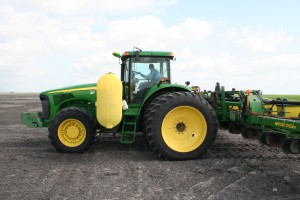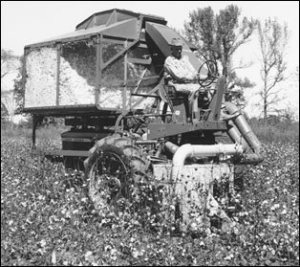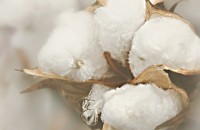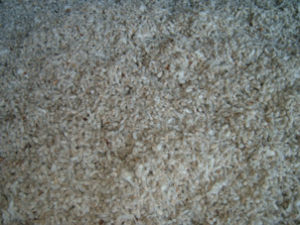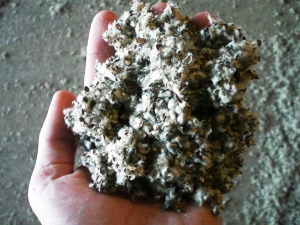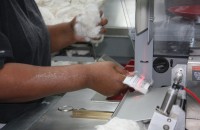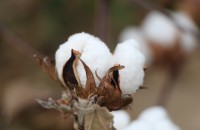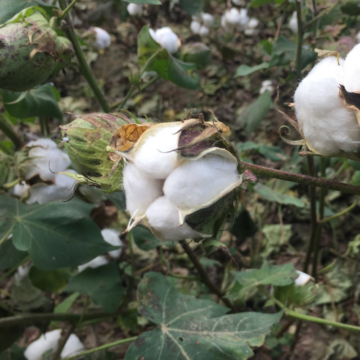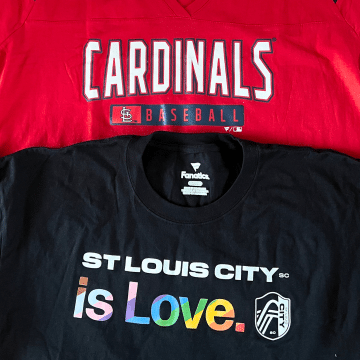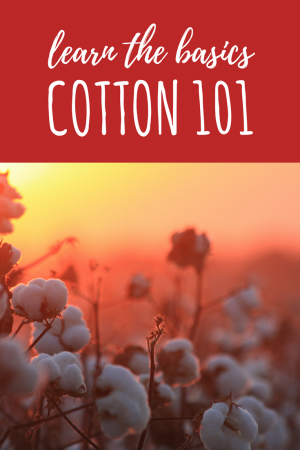 Having worked in the cotton industry for longer than I want to remember and having talked to so many experts over time, I’ve been able to pick up some of the basics. You know the Cotton 101. As I thought about what unique things I can put out here that may help others better understand ag, cotton was obviously one. While I have posted on the crop off and on since I started blogging, I decided to start an organized series of blog posts a couple of years ago and I still find myself adding to them!
Having worked in the cotton industry for longer than I want to remember and having talked to so many experts over time, I’ve been able to pick up some of the basics. You know the Cotton 101. As I thought about what unique things I can put out here that may help others better understand ag, cotton was obviously one. While I have posted on the crop off and on since I started blogging, I decided to start an organized series of blog posts a couple of years ago and I still find myself adding to them!
I keep a running list of some of the Cotton 101 posts on this page because cotton is such a major part of who I am within my agriculture adventure. Some of the posts are shown below but feel free to check out posts with the Cotton 101 tag too and if you want to meet people who grow my favorite fiber check out the Farmer Friday Series or learn about cotton fiber creators!
If you have questions about cotton, feel free to leave comments!
Although most people think of cotton in it’s final mature state, it’s important to remember that cotton has to grow from seed throughout the season to get to that point. And it’s amazing how often I’ve had folks ask me about something they’ve seen in a field as they were driving by. So, I thought I’d put together some photos here, that will help me reply to hopefully lots of interest in southern fields! So let’s look at cotton plants and fields different times of year. Read more of this post
Cotton 101: Planting Considerations
Cotton is a warm weather plant and doesn’t like wet feet at all. That simple sentences guides a lot of planting thoughts for the crop. Like all crops, at planting you want to be sure you have the depth set correctly for the soil type, etc.
Raised Beds for Planting – Depending on the soil types and typical moisture availability, some people will “bed up.” By creating raised beds a farmer can help channel water where they want it. My first cotton farm visit was to Mr. Ray Young’s in Wisner, La. (I blogged about how awesome that visit was for work.) I was there in the winter and the fields were perfectly in rows for the stale seedbed planting to come. He helped pioneer this version of conservation tillage as the beds would help him keep the seed in moisture but not too wet. Read more of this post
 Cotton Bolls — What makes this one so small?
Cotton Bolls — What makes this one so small?
When you look at two really different cotton bolls, what can you tell about them? What do you need to know to grow cotton? Read this post.
Cotton 101: Facts about Cotton — The Crop & Products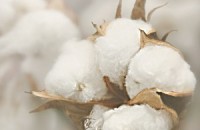
My friend Jasper Cunningham tweeted me one day asking me if I had some cotton facts on my blog. He seemed to enjoy several of the posts in my Cotton 101 series, especially the cotton dictionary, but I realized some quick and easy facts about cotton may be of interest too. Type of Plant Cotton […] Continue Reading
What is the Cotton Belt?
Cotton 101: Things Farmers Think Through in Selecting Cotton Varieties
Okay, big disclaimer here. I’m not a cotton expert nor a cotton farmer. I don’t mean to in anyway suggest which variety a given farmer should plant, but I thought some of the folks who don’t plant cotton varieties may be interested in some of the considerations cotton farmers have in selecting varieties to plant on their farm. So this is the sort of thing I’ve heard from farmers or experts. (Please weigh in if you are an expert!) Read more of this post
Cotton 101: Early Season Weather Problems
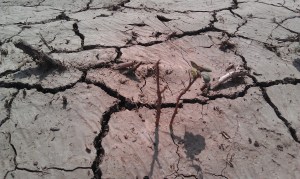 As I drove up to St. Louis last Sunday, I noticed some field work being done. Some planters running. My guess is the crop going in the ground was soybeans as we are getting too late for cotton and definitely too late for corn in Arkansas & West Tennessee. I noticed the sandbags that have been holding water back for more than a month seems to no longer have a job as water levels began going down.I spent my week in St. Louis working and can’t get over the reports that were coming in from various parts of the Cotton Belt. To say it hurt my heart may sound like I’m overracting, but the photos really do lead to a physical reaction. It is clear there is the potential for a lot of loss. Of course, things can always turn around too and farmers are the optimistic kind. Read more of this post
As I drove up to St. Louis last Sunday, I noticed some field work being done. Some planters running. My guess is the crop going in the ground was soybeans as we are getting too late for cotton and definitely too late for corn in Arkansas & West Tennessee. I noticed the sandbags that have been holding water back for more than a month seems to no longer have a job as water levels began going down.I spent my week in St. Louis working and can’t get over the reports that were coming in from various parts of the Cotton Belt. To say it hurt my heart may sound like I’m overracting, but the photos really do lead to a physical reaction. It is clear there is the potential for a lot of loss. Of course, things can always turn around too and farmers are the optimistic kind. Read more of this post
One of the folks I met through the National Agri-Marketing Association, Robert Ratliff, recently help me connect the dots.
Robert grew up on a cotton farm and had posted the photo to the left on his Facebook page. The caption on it pointed to a different machine that he used to pick cotton old school. He explained he “remembers ‘Second Picking’ of the cotton crop in November 1970 when he operated a John Deere, Model 22L, one-row cotton picker. Read more of this post
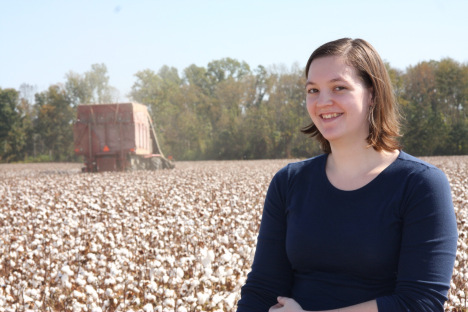
So the reality is, I was so excited to finally get Alicia into a cotton field at harvest, that I was giddy. You can hear it at the beginning of this video. (Yes, I resoundingly admit to being an agnerd.) Read more of this post
This is a guest post by my niece Alicia who’s currently working on her masters in education at the University of Memphis (she’s the fourth generation of women in my family to go there!). I’ve been lucky enough to have her living with me — we both seem to be enjoying it! I so appreciate her willingness to share what she learned her first time out on a working farm on this scale.
I recently had my first experience on a real farm that wasn’t there for tourists. Janice has worked in cotton since before I can remember and I have always been told how important it and other natural fibers are to our lives. I went with her to a friend’s farm to see how cotton was picked. Being from a small town in the South, I am used to fields of crops and farm equipment, however, cotton is not grown near my hometown in North Carolina. It was quite different from what I am used to seeing. This was the first time I’ve been in a cotton field and been able to look at the bolls up close. Read more of this post
Top Cotton Blogs You Should be Following
Pickers roll and depending on the equipment, there are a couple of different things that happen. As Alicia mentioned the other day, there is equipment called a boll buggy that may be involved, or a module builder or the picker can have an on-board moduling system.
Cotton used to be put into wagons. Someone would get in the wagon/trailer and jump up and down to compress it. The trailers would be taken to the gin and once emptied, it could be refilled. Farmers had multiple trailers but almost nobody could afford enough to keep harvesting non-stop. Read more of this post
Farmers have several choices on how to compact their crop (full size modules, smaller modules or round modules). All of them are made so cotton, once picked, can be temporarily stored and transported to the gin.
Those modules are tagged in the field to identify what farm & field it came from. You frequently see them tagged with a special kind of spray paint but there are also physical paper tags placed on the module that begin identifying that cotton. Read more of this post
Cotton gins. They haven’t changed the basic function since they were invented but I do know they have changed dramatically in size & speed. At the end of the day, all of them involve separating the seed from the lint. The vast majority of gin use a system of saws (think about the type used in a circular saw) pulling lint away from seed and through to a cleaning system. There are some gins that use a system of rollers rather than saws. Read more of this post
With grain crops like corn, soybeans and rice, the seed product is the primary commodity you sell. While that’s an everyday realization to farmers, sometimes consumers like myself have to pause to think about that. Yes, the beans we are eating are seeds as are the kernels of corn we are munching on. Well, cotton definitely differs.
Cottonseed are one of the parts of the cotton boll harvested in the picker and once the gin separates the seed from the lint there are a few options for what to do with it. I’ll walk through a few. Read more of this post
Okay. Gin Trash. The two words together… gin trash… the number of jokes that you can come up with based on those two simple words… Its unbelievable! BUT this is a Cotton 101 series so I better get back on track.
But let me start by saying the fact that we call it “gin trash” in no way reflects it has the properties of other trash. It’s very much an eco-friendly product of plant parts. And a number of researchers have looked into the potential uses of gin trash. Read more of this post
aka Vocabulary the Way I’ve Heard Cotton Farmers & Other Experts Use It & How It Can Be Misunderstood
If the title and subhead don’t point out this is not an academic endeavor, then let me say it outright. THIS IS NO ACADEMIC DICTIONARY ON COTTON. This is just a simple compilation of words that we use in cotton that may make other people not in the industry shrug their shoulders and say huh? Would appreciate additions, clarifications and questions all! Read more of this post
Fiber Quality Testing on Every Bale of US Cotton VIDEO
When I was thinking about doing this, it was letters like Q, X and Z that made me wonder if I could really do it. The video I shot as I showed a friend around Memphis came to mind quickly. Although Steve had worked in cotton for years off and on, seeing how cotton was […] Continue Reading
Cotton Plant 101: What do a cotton plant, blooms & bolls look like? VIDEO
Last weekend as I drove through the Missouri Bootheel, I saw cotton fields at various stages of development. In fact, I found one field that had a lot of bolls on it and was still blooming too, so it gave me a chance to show a lot of the different stages of growth for cotton. […] Continue Reading

